
The 1908 Pattern Web Infantry Equipment was an innovative type of webbing equipment adopted by the British Army before World War I. [1]

The 1908 Pattern Web Infantry Equipment was an innovative type of webbing equipment adopted by the British Army before World War I. [1]

During the Second Boer War of 1899–1902, the standard British Army set of personal equipment, comprising a belt, haversack and ammunition pouches, was the leather Slade-Wallace Equipment, which had been introduced in 1888. It proved unsuitable for holding modern ammunition, which was carried in stripper clips instead of as individual rounds, and its buffalo-hide leather tended to deteriorate during long periods in the field. A review of British shortcomings during the war was conducted by the 1903 Royal Commission on the War in South Africa, which heard evidence that the Slade-Wallace equipment was "an absurdity" and "cumbersome, heavy and badly balanced". As a stop-gap measure, the leather 1903 Bandolier Equipment, based on that used by the Boer Commandos, was issued, but it quickly proved to be unsuitable for infantry use. [2]
In 1906, Major Arnold R. Burrowes of the Royal Irish Fusiliers, working with the Mills Equipment Company, presented a design for a new set of equipment. Mills' American parent company had previously produced woven cotton webbing equipment for the US Army, but no European army had yet adopted it. The new Mills-Burrowes equipment, initially known as "the Aldershot design", was presented to a committee chaired by the Surgeon-General, which in turn recommended trials at home and abroad. Following the success of these trials, the webbing equipment was accepted by the Army Council in December 1907. [2]

The 1908 equipment, when fully assembled, formed a single piece, and could be put on or taken off like a jacket. Ammunition was stored in two sets of pouches attached to the belt at the front, and the straps from these passed over the shoulders, crossing diagonally at the back. The large pack, or "valise", or the haversack could be attached to these diagonal straps, thus spreading their weight. The D-shaped buckles and the strap ends were made of brass. The Haversack would have carried: rations, a mess tin, a white towel, wool shirt, wool socks, a holdall, and a rifle cleaning kit. The holdall would have carried a spoon, knife, fork, button stick, shaving brush, hair comb, toothbrush, razor, a bar of soap, and spare boot laces. The whole set consisted of: [3]
The equipment could be configured in two different ways; for "Full Marching Order" the valise was worn on the back and the haversack was worn hanging at the left hip. In "Battle Order" which was intended to be worn in combat, the valise was detached and the haversack was attached to the back in its place, connected to the ammunition pouches by separate straps. [4] In 1917, an additional haversack in khaki webbing was introduced to hold the Small Box Respirator; it was worn high-up on the chest. [5] [6]
In theory, an infantryman's Full Marching Order weighed 57 pounds 2+1⁄2 ounces (25.93 kilograms), and the Battle Order weighed 49 pounds 2 ounces (22.3 kilograms), both including the bayonet and 150 rounds of ammunition but excluding the Lee-Enfield rifle. However, in wartime conditions, the addition of new equipment such as the gas mask, steel helmet and hand grenades, together with the need to carry extra ammunition, rations and defence stores, meant that infantrymen could sometimes go into battle carrying loads estimated at up to 114 pounds (52 kilograms). [7]

The 1908 Pattern Web Equipment was the main equipment with which the British and Imperial armies fought the First World War. [8] The inability of the Mills factory to keep up with demand led to the introduction of a leather version, the 1914 Pattern Leather Equipment, which was intended for training and second line troops, but often found its way into the front lines. [9] Twenty years after the end of that conflict, the 1908 webbing was replaced by the 1937 Pattern Web Equipment. However, the massive expansion of the British and Commonwealth armed forces immediately before and after the outbreak of World War II meant that the 1908 webbing continued in front line use for some time. Some British infantry units in India and Hong Kong were still using the 1908 webbing in 1941. [10] The valise from the 1908 webbing continued to be used in the 1937 webbing. [4]
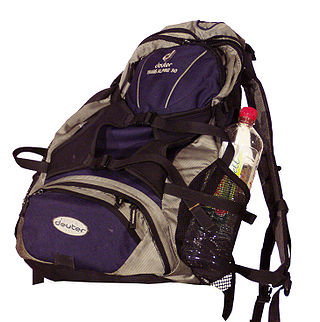
A backpack—also called knapsack, rucksack, pack, booksack, bookbag, or backsack—is, in its simplest frameless form, a fabric sack carried on one's back and secured with two straps that go over the shoulders, but it can have an external frame, internal frame, and there are bodypacks.

Webbing is a strong fabric woven as a flat strip or tube of varying width and fibres, often used in place of rope. It is a versatile component used in climbing, slacklining, furniture manufacturing, automobile safety, auto racing, towing, parachuting, military apparel, load securing, and many other fields.

A jerkin is a man's short close-fitting jacket, made usually of light-coloured leather, and often without sleeves, worn over the doublet in the 16th and 17th centuries. The term is also applied to a similar sleeveless garment worn by the British Army in the 20th century. A buff jerkin is an oiled oxhide jerkin, as worn by soldiers.

The Special Naval Landing Forces were naval infantry units of the Imperial Japanese Navy (IJN) and were a part of the IJN Land Forces. They saw extensive service in the Second Sino-Japanese War and the Pacific theatre of World War II.
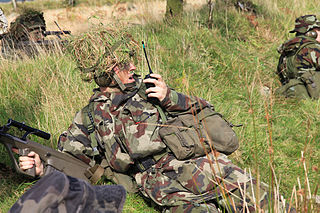
Personal Load Carrying Equipment (PLCE) is one of several tactical webbing systems of the British Armed Forces. Dependent upon the year of design, and the decade of introduction, the webbing system was named and is commonly referred to as the 85 Pattern, the 90 Pattern or the 95 Pattern webbing.

Blanco was a compound used primarily by soldiers throughout the Commonwealth from 1880 onwards to clean, colour, and waterproof their equipment as well as reduce its stiffness. It was first used by the British Army to whiten Slade Wallace buckskin leather equipment, and later adapted to coloured versions for use on the 1908 Pattern Web Equipment. Blanco was also used on the 1937 Pattern Web Equipment, though in this case it was primarily used for camouflage purposes since fitting instructions now permitted the use of conventional cleaning methods.

The IIFS was introduced in 1988, to serve as a fighting and existence carrying system—a possible replacement for the All-purpose Lightweight Individual Carrying Equipment employed and fielded by United States Armed Forces since 1973.

Service Dress is the style of khaki service dress uniform introduced by the British Army for use in the field from the early 1900s, following the experiences of a number of imperial wars and conflicts, including the Second Boer War. This variant of uniform continues to be worn today, although only in a formal role, as No. 2 Pattern dress.
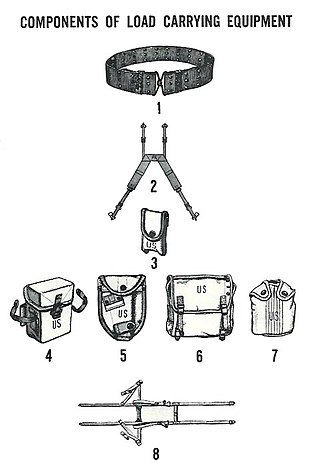
The M-1956 Load-Carrying Equipment (LCE), also known as the Individual Load-Carrying Equipment (ILCE), was developed by the U.S. Army and first issued in the early 1960s. The M-1956 LCE was designed to replace the M-1945 Combat Pack, the M-1923 cartridge belt, the M-1936 pistol belt and the M-1937 BAR magazine belt. The M-1956 LCE was designed to be quickly configured, using no tools, to accommodate various mission and ammunition loads. The M-1956 LCE remained in service through the 1980s and set the standard for future United States military load-carrying equipment.

A haversack, musette bag, or small pack is a bag with a single shoulder strap. Although similar to a backpack, the single shoulder strap differentiates this type from other backpacks. There are exceptions to this general rule.
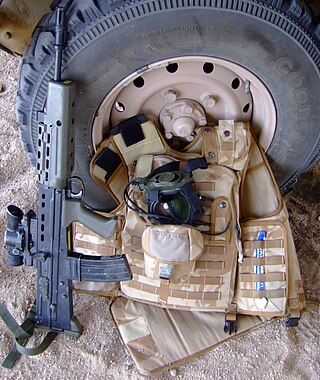
Osprey body armour is a system of body armour used by the British Armed Forces. The system is in its fourth iteration following extensive development and engagement with front line users.
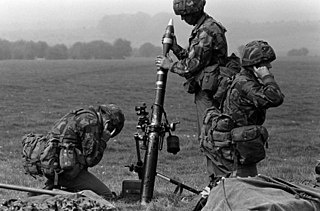
1958 Pattern Web Equipment was a modular personal equipment system issued to the British Armed Forces from 1959 up until the mid 90s. It replaced the 1937 Pattern Web Equipment that had served the UK's Armed Forces through the Second World War and the first decade of the Cold War and also the 1944 pattern Webbing which was used in jungle conditions starting from the mid-1960s.

The British Army used a variety of standardized battle uniforms and weapons during World War I. According to the British official historian Brigadier James E. Edmonds writing in 1925, "The British Army of 1914 was the best trained best equipped and best organized British Army ever sent to war". The value of drab clothing was quickly recognised by the British Army, who introduced Khaki drill for Indian and colonial warfare from the mid-19th century on. As part of a series of reforms following the Second Boer War, a darker khaki serge was adopted in 1902, for service dress in Britain itself. The British military authorities showed more foresight than their French counterparts, who retained highly visible blue coats and red trousers for active service until the final units received a new uniform over a year into World War I. The soldier was issued with the 1908 Pattern Webbing for carrying personal equipment, and he was armed with the Short Magazine Lee–Enfield rifle.
The 21st Punjabis were an infantry regiment of the British Indian Army. It was raised in 1857, as the 11th Regiment of Punjab Infantry. It was designated as the 21st Punjabis in 1903 and became 10th (Training) Battalion of 14th Punjab Regiment in 1922. In 1943, it was converted into the 14th Punjab Regimental Centre. In 1947, the 14th Punjab Regiment was allocated to the Pakistan Army. In 1956, the 1st, 14th, 15th and 16th Punjab Regimental Centres where amalgamated to form the Punjab Regimental Centre.

1937 Pattern Web Equipment was an item of military load-carrying equipment. It replaced the 1908 Pattern and 1925 Pattern—on which it was based—and was standard issue for British and Commonwealth troops from its introduction in 1937, throughout World War II, and in the post-war period until it was superseded by 1958 Pattern Web Equipment. It remained in limited use with Territorial Army and other second-line troops until the mid to late 1970s. Official use of the webbing in Community Cadet Forces and the Combined Cadet Force persisted into the 1980s.
The 1972 Pattern Webbing was intended to replace the 58 pattern webbing, but never got beyond user trials. It was made from PU-coated nylon to counter the Soviet NBC capability with a general look closer to a load-bearing vest. It was designed to be used in wide variety of environments such as jungles, deserts and was configurable for use, ranging from short-duration jungle patrols to general infantry use.
The 1939 pattern webbing was an item of military load-carrying equipment used in the Second World War. It was a leather variant of the 1937 pattern web equipment.
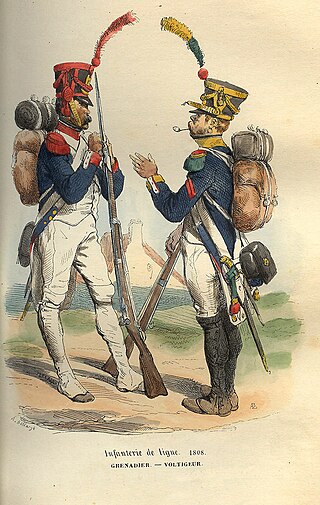
In military uniforms, a shoulder belt is a wide belt worn usually over the shoulder and across the body. With nearly all line infantry, skirmishers, light infantry, grenadiers and guard regiments, two shoulder belts were worn - one carrying the cartridge box, and another for the bayonet, a sword, or other military equipment.

The Ephod Combat Vest, also designated variously the A10 Model Infantry Load-bearing Rig, Individual Carrying Equipment, and "New style" Load Bearing Equipment, is a personal equipment system issued to the Israel Defense Forces (IDF) of the State of Israel since the mid-1970s. It replaced the modular-based 1950s "Old style" tan-khaki cotton canvas equipment and a variety of load-carrying waistcoats and assault vests used by Israeli infantry and elite units during the 1967 Six-Day War, the 1967-1970 War of Attrition, and the 1973 Yom Kippur War.

Valise Equipment, Pattern 1888 was a leather harness used by the British Armed Forces.